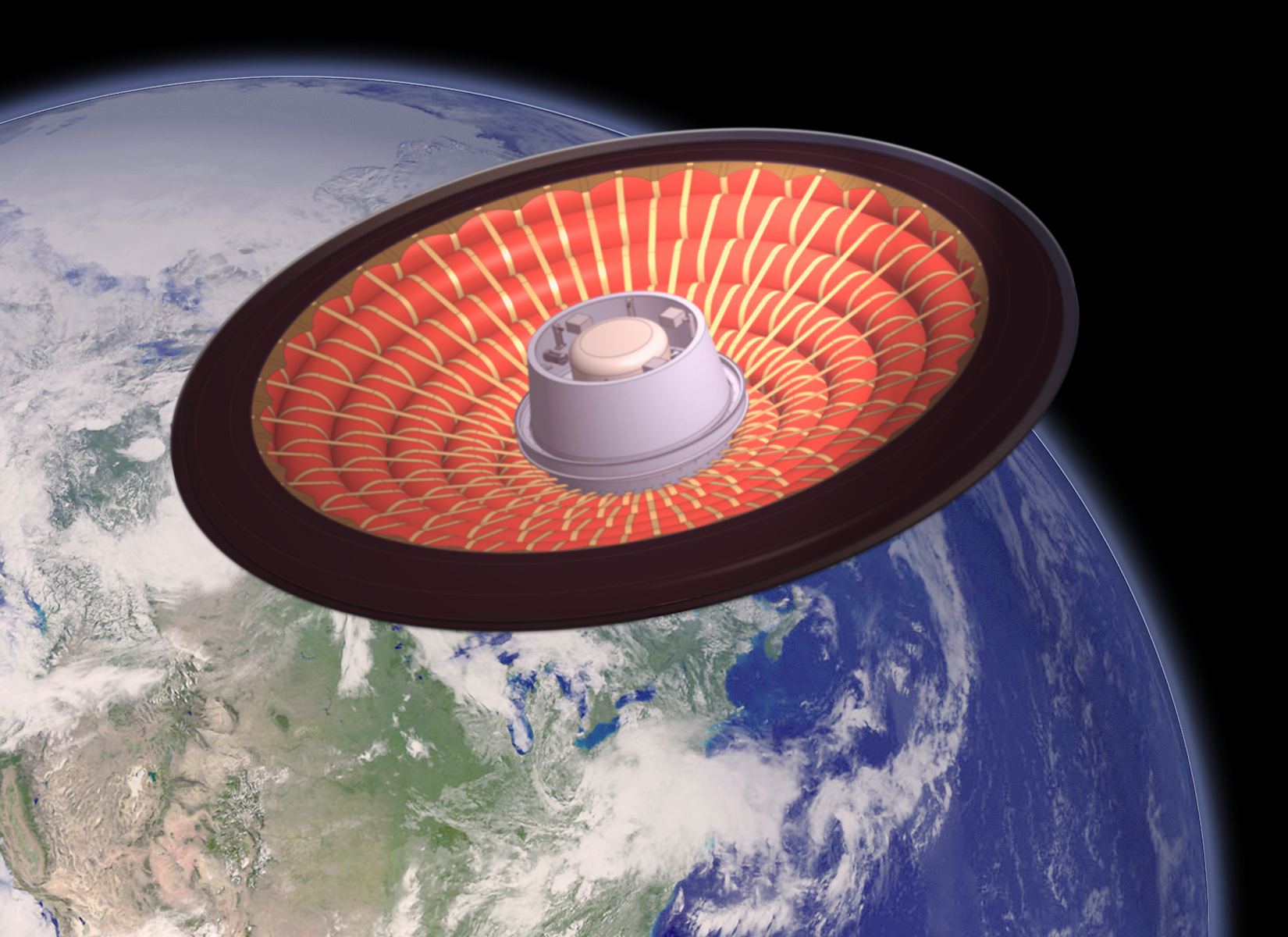One of the greater challenges of sending payloads to Mars is having to contend with the planet’s atmosphere. While incredibly thin compared to Earth’s (with roughly half of 1% of Earth’s air pressure), the resulting air friction is still an issue for spacecraft looking to land there. And looking to the future, NASA hopes to be able to land heavier payloads on Mars as well as other planets – some of which may have atmospheres as dense as Earth.
A possible solution to this is the use of inflatable aeroshells (aka. heat shields), which offer numerous advantages over rigid ones. To develop this technology, NASA and United Launch Alliance (ULA) have partnered to develop an inflatable heat shield known as the Low-Earth Orbit Flight Test of an Inflatable Decelerator (
When a spacecraft enters an atmosphere, aerodynamic forces begin exerting drag upon it. This helps to slow the spacecraft down, converting its kinetic energy into heat. Naturally, this heat can become very intense, posing a threat to the spacecraft and any crew it may have aboard. Hence why payloads and crewed missions are equipped with heat shields to protect them during atmospheric entry.
Since its inception in 1958, NASA has relied heavily on retro-rocket propulsion and rigid heat shields to decelerate spacecraft during orbital entry, descent, and landing (EDL) operations. Unfortunately, these systems come with their share of drawbacks, not the least of which is mass and the need for propellant. At the same time, scalability is a bit of an issue since larger payloads require a larger aeroshell, which means even more mass.
This is where inflatable heat shields are especially useful. Using this technology, NASA and other space agencies would be able to use larger aeroshells that could produce more drag while saving on mass. By incorporating ideas like LOFTID into their spacecraft, which utilize aerodynamic forces instead of propulsion, NASA stands to revolutionize the way it delivers payloads to planets and into orbit.
The concept is an example of Hypersonic Inflatable Aerodynamic Decelerator (HIAD) technology, which NASA has been researching for over a decade. HIAD not only provides the most mass-effective way to decelerate a spacecraft entering a planet with an atmosphere, but also overcomes the packaging limitations of rigid systems by utilizing inflatable materials that can be stowed within the launch vehicle.
This technology is therefore the most mass-effective way to decelerate a spacecraft entering a planet with an atmosphere, and could allow for larger masses to be delivered to any elevation on said planet. Having conducted two suborbital flight tests, the

Once testing is completed and the technology can be integrated,
Tests are still ongoing at NASA’s Langley Research Center, where engineers are preparing the inflatable heat shield for launch. This consists of measuring the temperature of nitrogen gas as it vents from the tanks that will be used during the maiden test flight. Pack and deployment testing is also being conducted by Airborne System, a parachute design and manufacturing company in Santa Ana, California.
If all goes well with the orbital test in 2022, we can expect that HIAD-type aeroshells will become a regular feature for missions to Mars, Venus, Titan, and other bodies in the Solar System that have denser atmospheres. And be sure to check out this video of the LOFTID heat shield, courtesy of the NASA Langley Research Center:
Further Reading: NASA

